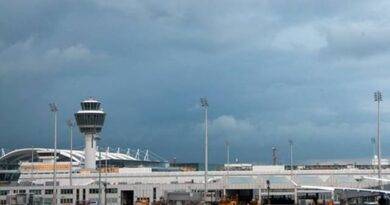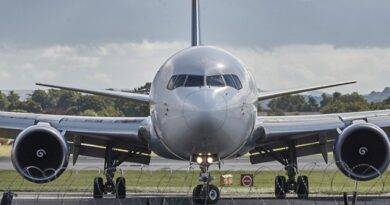Ego in Air Traffic Control: Its Impact on Teamwork and Safety
In the fast-paced and high-stakes world of air traffic control (ATC), effective teamwork is critical to ensure the safe and efficient movement of aircraft. However, the presence of ego among air traffic controllers can undermine collaboration, communication, and decision-making processes. In this article, we will explore the concept of ego in ATC, its potential effects on teamwork, and how addressing these issues can lead to improved safety in the aviation industry.
Understanding Ego in Air Traffic Control
Ego, in the context of ATC, refers to an individual’s self-importance and a sense of superiority over others. It can manifest in different ways, such as an unwillingness to accept feedback or assistance, a desire for personal recognition, and a tendency to resist constructive criticism. While confidence and assertiveness are important traits for air traffic controllers, unchecked ego can lead to interpersonal conflicts and hinder effective teamwork.
Impact on Teamwork
Communication Breakdown: Ego-driven controllers may resist open communication, leading to misunderstandings and misinterpretations. Effective communication is vital in ATC to ensure that instructions are clear and understood by all team members. Ego-driven behavior can prevent the sharing of critical information and ultimately compromise the safety of aircraft in the airspace.
Reduced Collaboration: Teamwork relies on the ability of controllers to work together seamlessly. When ego takes precedence over collaboration, controllers may be reluctant to seek or offer assistance, leading to missed opportunities for error detection and correction. As a result, potential hazards may go unnoticed, leading to compromised safety.
Decision-making Challenges: In high-pressure situations, quick and accurate decision-making is essential in ATC. However, ego-driven controllers may prioritize their ideas over others, leading to delayed or inappropriate decisions. In a team environment, diverse perspectives can lead to more informed choices, but ego can inhibit the flow of valuable insights.
Elevated Stress Levels: A tense and hostile work atmosphere caused by ego-driven behavior can significantly increase stress levels among air traffic controllers. Excessive stress can impair cognitive abilities, reaction times, and overall performance, all of which are critical in ensuring safe and efficient air traffic management.

Addressing Ego for Enhanced Teamwork
Foster a Culture of Openness: ATC organizations should promote a culture that encourages open communication and constructive feedback. Controllers should feel comfortable sharing their thoughts and concerns without fear of retribution, allowing for better information flow and decision-making.
Continuous Training and Professional Development: Implementing regular training sessions on communication, teamwork, and stress management can help build stronger and more cohesive ATC teams. These programs can address ego-related challenges and emphasize the importance of working together for the greater goal of aviation safety.
Recognition of Collaborative Efforts: Recognizing and celebrating successful teamwork can help reinforce a culture of collaboration over individual recognition. Acknowledging the collective effort required in air traffic control can diminish the desire for ego-driven recognition.
Encourage Supportive Leadership: ATC supervisors and managers play a pivotal role in shaping the team’s dynamics. Encouraging supportive and empathetic leadership can set a positive example for controllers and inspire a more cooperative work environment.
Conclusion
In the intricate world of air traffic control, ego can be a significant obstacle to effective teamwork and safety. By recognizing the potential consequences of unchecked ego and taking proactive measures to address it, ATC organizations can foster a collaborative and supportive atmosphere. A team-oriented culture that prioritizes open communication, mutual respect, and shared goals will ultimately enhance the safety and efficiency of air traffic management, leading to safer skies for all.
References:
- Federal Aviation Administration (FAA). (2016). Teamwork in Air Traffic Control. Retrieved from https://www.faa.gov/about/office_org/headquarters_offices/avs/offices/afs/afs900/afs920/library/teamwork_in_atc/
- Taylor, J. C., & Rinaldi, M. J. (2012). Ego and Leadership: The Case of Air Traffic Control. Air Traffic Control Quarterly, 20(1), 1-23.
- Smith-Jentsch, K. A., Cannon-Bowers, J. A., & Tannenbaum, S. I. (2008). Counterproductive Behaviors in Air Traffic Control: An Integrative Review. Aviation, Space, and Environmental Medicine, 79(4), 356-364.
- Helmreich, R. L., Merritt, A. C., & Wilhelm, J. A. (1999). The Evolution of Crew Resource Management Training in Commercial Aviation. The International Journal of Aviation Psychology, 9(1), 19-32.
- Wiener, E. L., Kanki, B. G., & Helmreich, R. L. (Eds.). (2010). Cockpit Resource Management (2nd ed.). Academic Press.
- Endsley, M. R., & Jones, W. M. (2012). Air Traffic Control Automation and System Degradation: Effects of Ego States on Performance. The International Journal of Aviation Psychology, 22(1), 29-43.
- Civil Aviation Safety Authority (CASA). (2017). Managing Human Factors in Air Traffic Control: Ego. Retrieved from https://www.casa.gov.au/sites/default/files/ef15-02_part2_0.pdf
- Amalberti, R. (2013). Navigating Safety: Necessary Compromises and Trade-Offs. Springer Science & Business Media.


